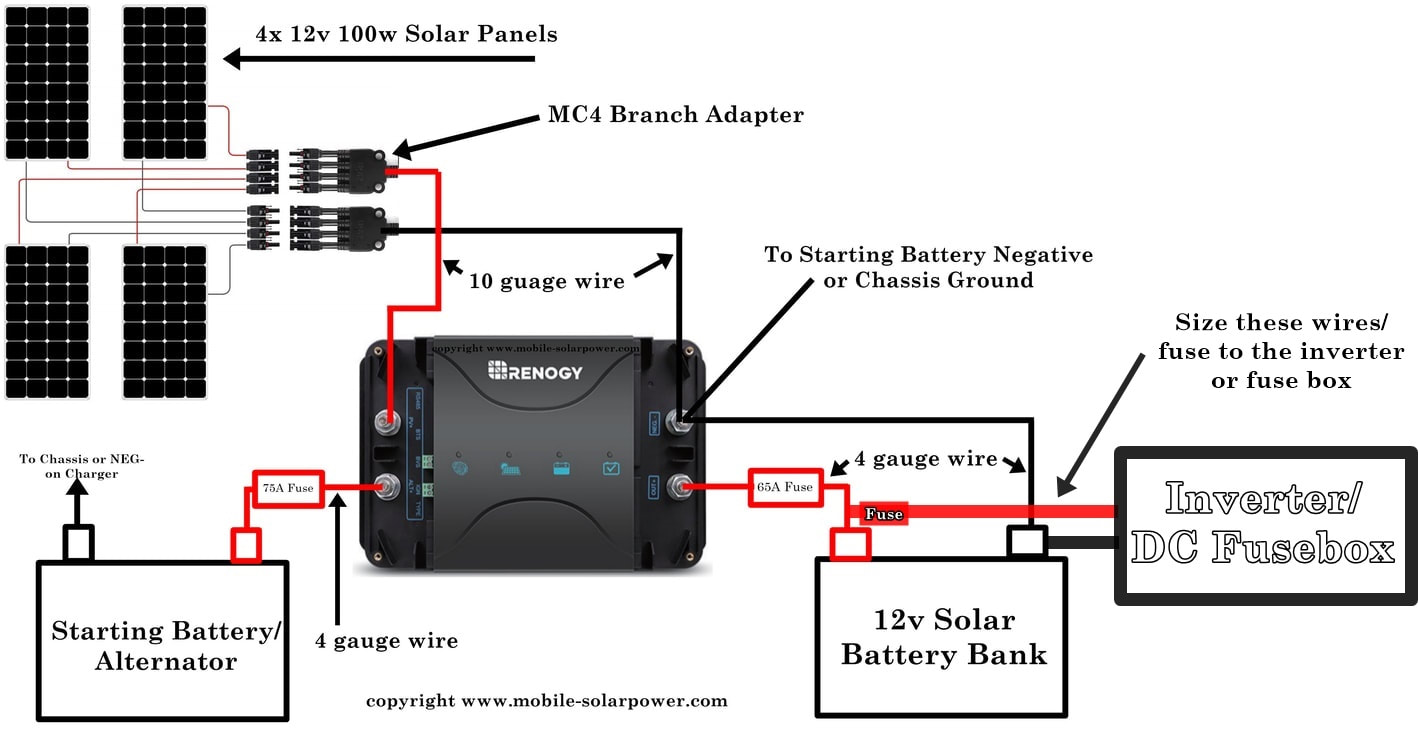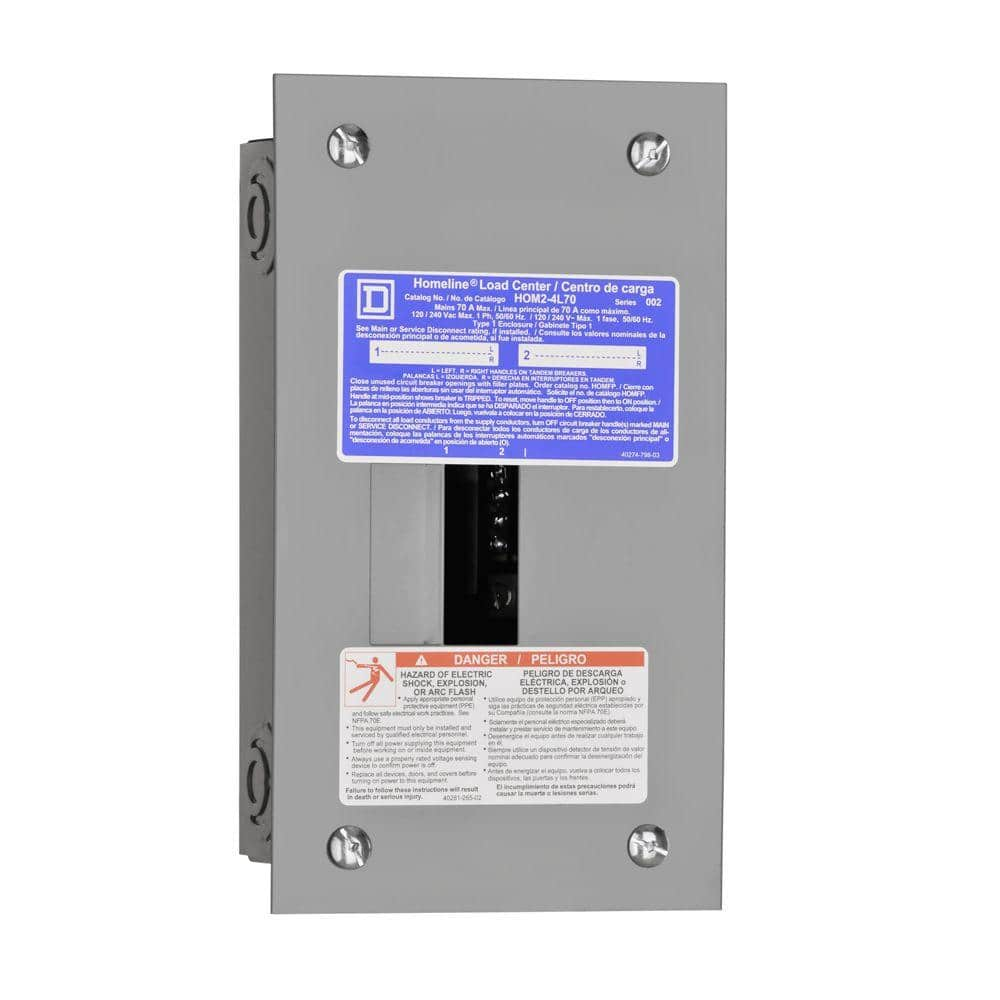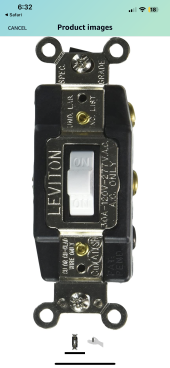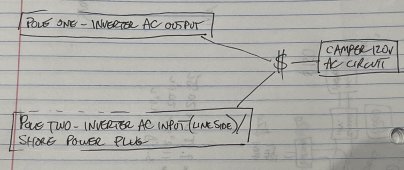GoldCountryCA
New Member
I bought a truck camper that will be here in May. In the meantime, I’m buying things to go into/onto the camper; currently working on the solar setup.
Renogy was having a sale so I bought the 50a dc-to-dc charger/mppt and their 2000w inverter charger. I also ordered four 100w Renogy black flexible “lightweight” solar panels as they were on sale on the jungle website. I haven’t made up my mind on batteries yet, as I have questions.
1. I imagine the leads from the solar panels are easy enough to shorten for a clean install on the roof? I don’t want slack or loops. Also, I thought about 200w on the roof and 200w on a kickstand, but I’m concerned about theft. Anyone have their panels stolen?
2. I looked up the 400w setup detailed here:

On this setup, he’s called out 200ah worth of lithium battery. However, since I plan on camping in the PNW quite often in areas with a thick tree canopy, I’m leaning towards more towards 3-400ah. I was looking at two ampere time 200ah with 200a BMS, or at four ampere time 100ah with 100a BMS. The reasons for considering four 100ah batteries vs the two 200ah are:
a) they will be a more efficient use of space in the cabinet they’ll be located in.
b) if something goes wrong on one battery, it’ll be much cheaper to replace and less detrimental during the period it’s down.
Will there be any performance differences with these two arrangements?
3. Has anyone come across a 4 circuit AC load center smaller than this:


I’d like to have a separate circuit leading to shore power lead, line side of inverter, load side of inverter and ac outlets.
The pro to this setup are to be able to bypass the need for the inverter to power ac circuit while hooked to shore power. I was thinking that if I’m hooked to shore power, no need in running high amp loads through the inverter (we’ll potentially be bringing a portable AC unit for trips to hot areas for the dogs).
The con to this setup is that my wife or someone else may potentially energize the load side of the inverter with shore power, potentially causing damage (either the shore power breaker will be providing power to the bus bar or the load side of the inverter will, but both breakers should not be on at the same time to prevent backfeeding).
Perhaps I can find an ‘A or B’ switch to tie both the load side of the Inverter and the shore plug into a single breaker, effectively fool proofing the system. But such a switch would need to be rated accordingly.
Any thoughts or criticisms to my plan would be greatly appreciated!
Renogy was having a sale so I bought the 50a dc-to-dc charger/mppt and their 2000w inverter charger. I also ordered four 100w Renogy black flexible “lightweight” solar panels as they were on sale on the jungle website. I haven’t made up my mind on batteries yet, as I have questions.
1. I imagine the leads from the solar panels are easy enough to shorten for a clean install on the roof? I don’t want slack or loops. Also, I thought about 200w on the roof and 200w on a kickstand, but I’m concerned about theft. Anyone have their panels stolen?
2. I looked up the 400w setup detailed here:

RV Solar Power Blue Prints
Building a vehicle mounted solar power system? Let me help.
www.mobile-solarpower.com
On this setup, he’s called out 200ah worth of lithium battery. However, since I plan on camping in the PNW quite often in areas with a thick tree canopy, I’m leaning towards more towards 3-400ah. I was looking at two ampere time 200ah with 200a BMS, or at four ampere time 100ah with 100a BMS. The reasons for considering four 100ah batteries vs the two 200ah are:
a) they will be a more efficient use of space in the cabinet they’ll be located in.
b) if something goes wrong on one battery, it’ll be much cheaper to replace and less detrimental during the period it’s down.
Will there be any performance differences with these two arrangements?
3. Has anyone come across a 4 circuit AC load center smaller than this:

Square D Homeline 70 Amp 2-Space 4-Circuit Indoor Flush Mount Main Lug Load Center with Cover HOM24L70FCP - The Home Depot
The Square D Homeline 70 Amp 2-Space 4-Circuit Indoor Surface Mount Main Lugs Load Center is UL listed for residential and commercial power distribution. This load center is built with a plated, aluminum
www.homedepot.com

I’d like to have a separate circuit leading to shore power lead, line side of inverter, load side of inverter and ac outlets.
The pro to this setup are to be able to bypass the need for the inverter to power ac circuit while hooked to shore power. I was thinking that if I’m hooked to shore power, no need in running high amp loads through the inverter (we’ll potentially be bringing a portable AC unit for trips to hot areas for the dogs).
The con to this setup is that my wife or someone else may potentially energize the load side of the inverter with shore power, potentially causing damage (either the shore power breaker will be providing power to the bus bar or the load side of the inverter will, but both breakers should not be on at the same time to prevent backfeeding).
Perhaps I can find an ‘A or B’ switch to tie both the load side of the Inverter and the shore plug into a single breaker, effectively fool proofing the system. But such a switch would need to be rated accordingly.
Any thoughts or criticisms to my plan would be greatly appreciated!





